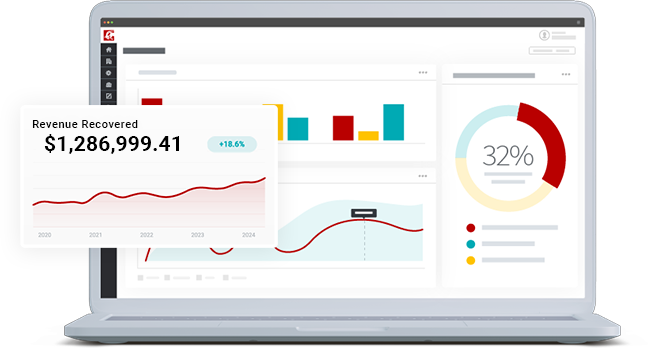What Is Third-Party Fraud? How Does It Impact Merchants?
Your business is doing well. You’ve had a profitable month, with a couple of big sales to brand-new customers.
Everything looks rosy... until you get hit with a notification saying those two new customers weren’t real customers at all. They were scammers, and the real cardholders were victims of identity theft.
This is a textbook example of third-party fraud. In other words, stolen credentials were used by unauthorized third party for making a purchase.
How does this happen? Who’s liable for the damage? Let’s take a look at what constitutes third-party fraud and what differentiates it from other types of payment fraud. We’ll also look at some preventative measures merchants can take to protect their businesses.
Recommended reading
- Fake Google Reviews: How to Identify, Remove & Prevent
- The Top 10 Prepaid Card Scams to Watch Out For in 2025
- How do Banks Conduct Credit Card Fraud Investigations?
- Credit Card Cloning: How it Works & How You Can Prevent It
- How Overpayment Scams Work: Signals, Examples & Prevention
- How New Account Fraud Works: Red Flags & How to Prevent it
What is Third-Party Fraud?
- Third-Party Fraud
Third-party fraud refers to any crime committed by using false identification to pose as another person or organization, without that party’s knowledge or authorization.
[noun]/THərd • pär • dē • frôd/
With third-party retail fraud, criminals hide behind a false identity. The fraudster can pose as a legit cardholder, or use data points from different users to create a completely synthetic profile.
Third-party tactics are often used to facilitate transaction fraud. Cyber-criminals use that stolen info to take over existing accounts, or open accounts without the victim’s knowledge. These are often credit card accounts that can then be used to make purchases.
That's not true in every case, though. Criminals have even been known to apply for major loans and mortgages under false identities, for example, which also constitutes third-party fraud.
First-Party, Second-Party, or Third-Party Fraud: What’s the Difference?
There’s a distinction between first-party, second-party, and third-party fraud. Third-party fraud involves a perpetrator using stolen or falsified information without the legitimate cardholder's involvement, or even creating fraudulent accounts.
Since third-party fraud exists, it stands to reason there would be first- and second-party fraud as well.
First-Party Fraud
First-party fraud is any kind of fraud committed by the actual cardholder or another authorized user. For instance, if a valid purchase is made, but the buyer disputes the transaction at a later date, that is a case of first-party fraud.
Second-Party Fraud
Second-party fraud is similar, except that the claims are made through an accomplice. The second person is used to mask the identity of the fraudster. For example, a cardholder lends their information to a scammer, and then later reports the activity as unauthorized.
The primary difference with third-party fraud is that the legitimate owner of the information isn’t involved at all. In fact, there may not even be a legitimate cardholder; the fraud may originate with a falsified account. All totaled, 38% of financial crimes committed in 2022 were attributed to third-party fraud.
Common Types of Third-Party Fraud
The term third-party fraud is often used interchangeably with “identity theft.” This is a bit of an oversimplification, though.
The truth is that there are dozens of different third-party fraud tactics out there. Here’s a rundown on some common third-party fraud schemes you might encounter:
Having trouble differentiating different types of fraud?
More and more merchants are finding that the right outside provider can tie up fewer resources and deliver a higher ROI.
Request a Demo
Third-Party Fraud Red Flags
Fraud red flags include unusual behaviors such as mismatched billing and shipping addresses, multiple declined payment attempts, or requests for overnight shipping on costly items. While these indicators are not definitive proof of fraud, they warrant further scrutiny when several occur together.
With that big list of tactics we just outline above, you might’ve already guessed that there’s another list a mile long of “red flags” suggesting a transaction might be fraudulent.
You’re not wrong there; each tactic has it’s own telltale signs that may help expose an attack. That said, there are some common red flags that will help you identify most fraud attacks:
- Transactions with abnormally high dollar values
- Repeated transactions for small amounts in rapid succession
- Mismatches of shipping and billing address
- Multiple declined payment attempts
- Unfamiliar IP addresses or unusual locations
- Emails from obscure or disposable domains
- Vague or incomplete contact details
- Requests for overnight shipping on expensive items
- Multiple accounts linked to the same device or IP address
None of these should be considered absolute proof of fraud. But, when you see multiple red flags flying... it’s probably wise to subject that order to additional screening.
How to Identify Third-Party Fraud
Fraud detection tools like fraud filters and fraud scoring can help identify potentially fraudulent transactions by analyzing customer profiles and behaviors. These tools are essential for protecting businesses from scams and reducing chargeback rates.
Each category of fraud requires its own approach to prevention. First-party fraud, for example, happens post-transaction. Combatting it requires contesting invalid customer claims, or using an alerts program to catch disputes before they escalate to formal chargebacks.
In contrast, third-party fraud needs to be countered at the verification stage, before the transaction is completed. Conducting due diligence to investigate and pinpoint the red flags outlined above can be difficult and time-consuming, though. The good news is that you can largely automate that process.
Advanced fraud filters employ artificial intelligence and machine learning to verify that a cardholder’s documents are genuine. Detailed customer profiles can be used to help identify any actions that seem to be out of character or don’t match the buyer’s purchase history.
Learn more about fraud filtersYou can then take those customer profiles and subject them to fraud scoring. This will look at all the key indicators, weigh the potential risk, and give you a simple numeric score between 0 and 100 to say how likely it is that a transaction is a scam. You can then choose to reject those orders automatically, or set them aside for manual screening.
Learn more about fraud scoringPreventing Third-Party Fraud
Stopping third-party fraud is most effective during the verification stage, before transactions are completed. Effective fraud prevention requires the strategic use of tools and methodologies tailored to the specific challenges faced.
Simply put, the best way to prevent third-party fraud is by validating buyers. As a merchant, you can’t stop identity theft from happening. What you can do is put a system in place to recognize it prior to a transaction.
There are a number of tools available to help identify risky transactions. Deploying the right fraud prevention solution is as vital as adopting the right internal processes. Here are some suggestions:
Learn more about fraud detectionIn addition to the above tools, make a habit of assessing and analyzing the methods by which people present their identity. This may help detect suspicious buying activity, inconsistencies, or patterns similar to past instances of known fraud.
The point at which you can stop a third-party fraud attack is the verification stage, before the transaction is finalized.
Fraud prevention is about combining the right tools and the right approach to combat the specific issues you’re dealing with.
But, you’ve got to be clear eyed about the situation here. Criminals get more sophisticated all the time, and staying up-to-date on the latest risks can be a full-time job on its own. So, even with the best strategy in the world, your business will still be susceptible to fraud.
The experts at Chargebacks911® are constantly uncovering new fraud threats and developing innovative strategies and technologies to combat them. This includes not only third-party fraud, but fraud from all other sources.
Need a hand preventing third-party fraud and the resulting chargebacks? No worries: we can help. Contact us today for a free demo.
FAQs
What is third-person fraud?
Third-party fraud refers to crimes committed by using false identification to pose as another person or organization, without that party’s knowledge or authorization.
The fraudster typically poses as an actual cardholder, but sometimes uses a completely synthetic profile. Cyber-criminals take the personal information of one cardholder (or even several different cardholders) and either take over existing accounts or open accounts without the victim’s knowledge.
What are examples of third-party fraud?
Common types of 3rd-party fraud include identity theft, account takeover, synthetic fraud, loan stacking, and new account fraud or application fraud. These are the general strategies used, but specific tactics can vary significantly.
What's the difference between first- and third-party fraud?
With third-party fraud, the perpetrator pretends to be someone else, using stolen personal data for unauthorized purchases. The owner of the identity is a victim, unconnected to the crime. With first-party fraud, the fraudster is using their actual identity, but misrepresents the facts of their claim to get something (such as a refund) they don’t deserve.
What is considered a third-party transaction?
A third-party transaction occurs when a separate entity facilitates or handles a transaction between two primary parties. This often involves a payment processor, financial institution, or another intermediary that ensures the exchange is completed securely. For example, when a consumer uses a payment service provider to make a purchase, the provider acts as the third party in the transaction.
How can third-party fraud be prevented?
Third-party fraud can be prevented by implementing robust security measures such as multi-factor authentication and encryption to protect sensitive data. Businesses should also monitor transactions for suspicious activity using advanced fraud detection tools powered by artificial intelligence and machine learning. Additionally, educating consumers and employees about recognizing phishing attempts and other scams can significantly reduce vulnerability to fraud.













